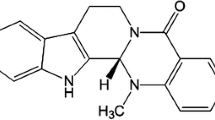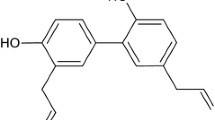Abstract
Previously we observed that capsaicin, a transient receptor potential vanilloid 1 (TRPV1) receptor activator, inhibited transient potassium current (IA) in capsaicin-sensitive and capsaicin-insensitive trigeminal ganglion (TG) neurons from rats. It suggested that the inhibitory effects of capsaicin on IA have two different mechanisms: TRPV1-dependent and TRPV1-independent pathways. The main purpose of this study is to further investigate the TRPV1-independent effects of capsaicin on voltage-gated potassium channels (VGPCs). Whole cell patch-clamp technique was used to record IA and sustained potassium current (IK) in cultured TG neurons from trpv1 knockout (TRPV1−/−) mice. We found that capsaicin reversibly inhibited IA and IK in a dose-dependent manner. Capsaicin (30 μM) did not alter the activation curve of IA and IK but shifted the inactivation–voltage curve to hyperpolarizing direction, thereby increasing the number of inactivated VGPCs at the resting potential. Administrations of high concentrations capsaicin, no use-dependent block, and delay of recovery time course were found on IK and IA. Moreover, forskolin, an adenylate cyclase agonist, selectively decreased the inhibitory effects of IK by capsaicin, whereas none influenced the inhibitions of IA. These results suggest that capsaicin inhibits the VGPCs through TRPV1-independent and PKA-dependent mechanisms, which may contribute to the capsaicin-induced nociception.







Similar content being viewed by others

Abbreviations
- VGPCs:
-
Voltage-gated potassium channels
- TRPV1:
-
Transient receptor potential vanilloid 1
- IA :
-
Transient potassium currents
- IK :
-
Sustained potassium currents
References
Boudaka A, Worl J, Shiina T, Neuhuber WL, Kobayashi H, Shimizu Y, Takewaki T (2007) Involvement of TRPV1- dependent and -independent components in the regulation of vagally induced contractions in the mouse esophagus. Eur J Pharmacol 556:157–165
Brederson JD, Kym PR, Szallasi A (2013) Targeting TRP channels for pain relief. Eur J Pharmacol 00173:S0014–2999
Calixto JB, Kassuya CA, Andre E, Ferreira J (2005) Contribution of natural products to the discovery of the transient receptor potential (TRP) channels family and their functions. Pharmacol Ther 106:179–208
Cao XH, Cao XS, Xie H, Yang R, Lei G, Li F, Li A, Liu CJ, Liu LJ (2007) Effect of capsaicin on VGSCs in TRPV1−/− mice. Brain Res 1163:33–43
Castle NA (1992) Differential inhibition of potassium currents in rat ventricular myocytes by capsaicin. Cardiovasc Res 26:1137–1144
Caterina MJ, Leffler A, Malmberg AB, Martin WJ, Trafton J, Petersen-Zeitz KR, Koltzenburg M, Basbaum AI, Julius D (2000) Impaired nociception and pain sensation in mice lacking the capsaicin receptor. Science 288(5464):306–313
Chieng BC, Christie MJ, Osborne PB (2006) Characterization of neurons in the rat central nucleus of the amygdala: cellular physiology, morphology, and opioid sensitivity. J Comp Neurol 497:910–927
Chow J, Norng M, Zhang J, Chai J (2007) TRPV6 mediates capsaicin-induced apoptosis in gastric cancer cells-Mechanisms behind a possible new ‘hot’ cancer treatment. Biochim Biophys Acta 1773:565–576
Fischer MJ, Btesh J, McNaughton PA (2013) Disrupting sensitization of transient receptor potential vanilloid subtype 1 inhibits inflammatory hyperalgesia. J Neurosci 33:7407–7414
Hakim AW, Dong XD, Svensson P, Kumar U, Cairns BE (2009) TNFalpha mechanically sensitizes masseter muscle afferent fibers of male rats. J Neurophysiol 102(3):1551–1559
Hibino Y, Morise M, Ito Y, Mizutani T, Matsuno T, Ito S, Hashimoto N, Sato M, Kondo M, Imaizumi K, Hasegawa Y (2011) Capsaicinoids Regulate Airway Anion Transporters through Rho Kinase-and Cyclic AMP-Dependent Mechanisms. Am J Respir Cell Mol Biol 45(4):684–691
Jeub M, Emrich M, Pradier B, Taha O, Gailus-Durner V, Fuchs H, de Angelis MH, Huylebroeck D, Zimmer A, Beck H, Racz I (2011) The transcription factor Smad-interacting protein 1 controls pain sensitivity via modulation of DRG neuron excitability. Pain 152:2384–2398
Kang S, Wu C, Banik RK, Brennan TJ (2010) Effect of capsaicin treatment on nociceptors in rat glabrous skin one day after plantar incision. Pain 148:128–140
Kehl SJ (1994) Block by capsaicin of voltage-gated K + currents in melanotrophs of the rat pituitary. Br J Pharmacol 112:616–624
Kim CS, Park WH, Park JY, Kang JH, Kim MO, Kawada T, Yoo H, Han IS, Yu R (2004) Capsaicin, a spicy component of hot pepper, induces apoptosis by activation of the peroxisome proliferator-activated receptor γ in HT-29 human colon cancer cells. J Med Food 7(3):267–273
Kinch DC, Peters JH, Simasko SM (2012) Comparative pharmacology of cholecystokinin induced activation of cultured vagal afferent neurons from rats and mice. PLoS ONE 7:e34755
Kuenzi FM, Dale N (1996) Effect of capsaicin and analogues on potassium and calcium currents and vanilloid receptors in Xenopus embryo spinal neurones. Br J Pharmacol 119:81–90
Liu L, Simon SA (2003) Modulation of IA Currents by Capsaicin in Rat Trigeminal Ganglion Neurons. J Neurophysiol 89:1387–1401
Liu L, Oortgiesen M, Li L, Simon SA (2001) Capsaicin inhibits activation of voltage-gated sodium currents in capsaicin-sensitive trigeminal ganglion neurons. J Neurophysiol 85:745–758
Liu L, Yang T, Bruno MJ, Andersen OS, Simon SA (2004) Voltage-gated ion channels in nociceptors: modulation by cGMP. J Neurophysiol 92(4):2323–2332
Lundbæk JA, Birn P, Tape SE, Toombes GES, Søgaard R, Koeppe Roger E, Gruner SM II, Hansen AJ, Andersen OS (2005) Capsaicin Regulates Voltage-Dependent Sodium Channels by Altering Lipid Bilayer Elasticity. Mol Pharmacol 68:680–689
Maljevic S, Lerche H (2013) Potassium channels: a review of broadening therapeutic possibilities for neurological diseases. J Neurol 260:2201–2211
Malykhina AP, Qin C, Lei Q, Pan XQ, Greenwood-Van Meerveld B, Foreman RD (2013) Differential effects of intravesical resiniferatoxin on excitability of bladder spinal neurons upon colon-bladder cross-sensitization. Brain Res 1491:213–224
Nie A, Wei C, Meng Z (2009) Sodium metabisulfite modulation of potassium channels in pain-sensing dorsal root ganglion neurons. Neurochem Res 34:2233–2242
Palazzo E, Luongo L, de Novellis V, Rossi F, Marabese I, Maione S (2012) Transient receptor potential vanilloid type 1 and pain development. Curr Opin Pharmacol 12:9–17
Petersen M, Pierau FK, Weyrich M (1987) The influence of capsaicin on membrane currents in dorsal root ganglion neurons of guinea-pig and chicken. Pflugers Arch 409:403–410
Premkumar LS, Abooj M (2013) TRP channels and analgesia. Life Sci 92:415–424
Savio-Galimberti E, Gollob MH, Darbar D (2012) Voltage-gated sodium channels: biophysics, pharmacology, and related channelopathies. Front Pharmacol 3:124
Sculptoreanu A, Yoshimura N, de Groat WC (2004) KW-7158 [(2S)-(+)-3, 3, 3-trifluoro-2-hydroxy-2-methyl-N- (5, 5, 10-trioxo-4, 10-dihydro thieno [3,2-c][1] benzothiepin-9-yl) propanamide] enhances A-type K + currents in neurons of the dorsal root ganglion of the adult rat. J Pharmacol Exp Ther 310:159–168
Silva JR, Goldstein SA (2013) Voltage-sensor movements describe slow inactivation of voltage-gated sodium channels I: wild-type skeletal muscle Na(V)1.4. J Gen Physiol 141:309–321
Stewart T, Beyak MJ, Vanner S (2003) Ileitis modulates potassium and sodium currents in guinea pig dorsal root ganglia sensory neurons. J Physiol 552:797–807
Surh YJ, Kundu JK (2011) Molecular mechanisms of chemoprevention with capsaicinoids from chili peppers. Vegetables, Whole Grains, and Their Derivatives in Cancer Prevention. Springer, Netherlands, pp 123–142
Takeda M, Tanimoto T, Ikeda M, Nasu M, Kadoi J, Yoshida S, Matsumoto S (2006) Enhanced excitability of rat trigeminal root ganglion neurons via decrease in A-type potassium currents following temporomandibular joint inflammation. Neuroscience 138:621–630
Wang SY, Mitchell J, Wang GK (2007) Preferential block of inactivation-deficient Na+ currents by capsaicin reveals a non-TRPV1 receptor within the Na+ channel. Pain 127(1):73–83
Xiong Z, Liu Y, Hu L, Ma B, Ai Y, Xiong C (2013) A rapid facilitation of acid-sensing ion channels current by corticosterone in cultured hippocampal neurons. Neurochem Res 38:1446–1453
Xu GY, Winston JH, Shenoy M, Yin H, Pasricha PJ (2006) Enhanced excitability and suppression of A-type K + current of pancreas-specific afferent neurons in a rat model of chronic pancreatitis. American Journal of Physiology-Gastrointestinal and Liver. Physiology 291:424–431
Acknowledgments
This work was supported by NNSF grant 30571537, 30271500, NIH grant GM-63577, and by Education Department grant of Hubei province B2013148.
Conflict of interest
The authors declare that they have no conflicts of interest.
Author information
Authors and Affiliations
Corresponding author
Rights and permissions
About this article
Cite this article
Yang, R., Xiong, Z., Liu, C. et al. Inhibitory Effects of Capsaicin on Voltage-Gated Potassium Channels by TRPV1-Independent Pathway. Cell Mol Neurobiol 34, 565–576 (2014). https://doi.org/10.1007/s10571-014-0041-1
Received:
Accepted:
Published:
Issue Date:
DOI: https://doi.org/10.1007/s10571-014-0041-1



